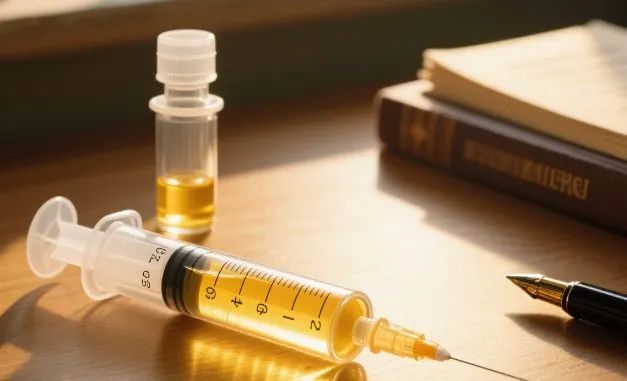What Is the Market Code Behind the Surge in Demand for Medical Polymers?
The current medical device market has surpassed one trillion yuan, with an annual compound growth rate of 20%. However, the dependence on imported high-end raw materials remains as high as 75%.
When centralized procurement drives terminal prices to the floor, the upstream material bottleneck becomes a bleeding point on the profit statement.
What is even more troublesome is that geopolitical tensions and supply disruptions caused by the pandemic can turn "being unable to buy" into "being unable to afford."
Therefore, discussing domestically-produced medical chemical materials is not about sentiment; it's a matter of survival.

Technology Map: Three Types of Materials, Four Tracks
High polymer materials (60%): including polyurethane, PEEK, PLA, COC/COP, etc.
Inorganic non-metallic materials: including high-purity quartz, bioceramics, etc.
Metals and composite materials: such as titanium alloys, carbon fiber reinforced polymers, etc.
The true determinant of an industry's development ceiling lies in the four "high-barrier tracks."
Ultra-high molecular weight polyethylene (used for artificial joints)
Halogenated butyl rubber (used for vaccine stoppers)
Cycloolefin Copolymer COC/COP (used in optical and packaging fields)
Absorbable polymer sutures (such as PGLA, PLGA)
Breakthroughs in Domestic "Points" and "Lines"
Lanzhou Petrochemical: Its medical polypropylene purification unit will be put into operation in 2024, successfully replacing imported materials for infusion bags, with a reduction of 18% in cost per ton.
Acoli: The thousand-ton COC unit will undergo trial operation by the end of 2024. The product has a light transmittance of 92% and samples have been sent to leading vaccine companies for accelerated aging tests.
TuoXi Technology: The 3,000 tons/year COP facility was put into operation in 2023, and its products have entered the supply chain of Japanese optical customers.
However, these breakthroughs are all concentrated at the "point" level of technology and have yet to form a "line"-shaped industrial chain. Upstream monomers, catalysts, equipment, and certification systems are still controlled by overseas giants.
The three major bottlenecks: purity, precision, trustworthiness
In terms of purity, the purity of domestically produced norbornene monomer is 99%, while the imported one is 99.9%. This 0.9% difference results in a fluctuation of ±2% in the light transmittance of COC, which is a decisive factor for "one-vote veto" in optical-grade applications.
In terms of precision: The degradation rate deviation of domestic absorbable sutures is ±20%, while that of imported products is ±5%. This results in a 30% reduction in the post-operative tension maintenance time, directly affecting clinical acceptance.
In terms of trustworthiness: The FDA/CE certification process can take as long as 3-5 years and cost up to tens of millions. Only 10% of domestic companies have obtained this "passport." For high-value consumables in top-tier hospitals, 90% still prefer imported products. This is not a matter of adoring foreign goods, but rather a measure to minimize risk.
Supply chain collaboration gap
Orthopedic implants require an integrated development model of "materials — instruments — surgical techniques." However, in China, most efforts are currently "single-handed": material manufacturers lack clinical data, instrument manufacturers lack material parameters, and hospitals do not provide engineering feedback. This results in a situation where good materials cannot be used to make good instruments, and good instruments cannot find suitable materials.
The current window period is only five years left.
The "14th Five-Year Plan" special project for new materials, the trillion-level fund, and the fifth set of standards on the STAR Market have lowered the profitability threshold, leading to an intensive influx of capital into this field. However, the window of opportunity will not be long: on one hand, centralized procurement continues to compress end profits, forcing upstream price reductions; on the other hand, overseas giants are building factories in China, using localization strategies to address domestic substitution. In other words, the period from 2025 to 2030 will be a decisive phase of "technology + certification + capacity" triple-front battle.
From "Substitute" to "Define"
Vertical integration: Taking COC/COP as an example, it is necessary to simultaneously tackle the development of norbornene monomers, metallocene catalysts, and continuous polymerization reactors to further reduce costs by 30%. This approach will provide an opportunity to enter the low-end optical market and expand cash flow.
Standards First: The Joint Drug Administration and Industry Associations Establish "Medical Grade Materials Group Standards" to Shorten the Clinical Validation Cycle.
Clinical co-creation: Establish a "Materials - Instruments" joint laboratory in a top-tier hospital to translate doctors' early-stage needs into engineering specifications, preventing the situation where products are made but not used.
Equipment localization: Provide first set insurance and interest-subsidized loans for continuous polymerization reactors and devolatilization equipment to reduce trial-and-error costs.
Development Suggestions
Chinese high-end medical chemical materials are standing on the threshold of "from 1 to 10": laboratory technologies have proven feasible, and small-scale and pilot-scale tests have been completed. However, mass production consistency, clinical trust, and global certification remain the "three major challenges" to overcome. The harsh reality of the medical industry is that falling behind even by half a step means losing not only the market but also the critical treatment window for patients. In the next five years, only by simultaneously raising "purity, precision, and trustworthiness" to over 90% can domestic materials truly transition from being "usable" to "highly effective," thereby firmly holding the initiative in the trillion-dollar market.
【Copyright and Disclaimer】The above information is collected and organized by PlastMatch. The copyright belongs to the original author. This article is reprinted for the purpose of providing more information, and it does not imply that PlastMatch endorses the views expressed in the article or guarantees its accuracy. If there are any errors in the source attribution or if your legitimate rights have been infringed, please contact us, and we will promptly correct or remove the content. If other media, websites, or individuals use the aforementioned content, they must clearly indicate the original source and origin of the work and assume legal responsibility on their own.
Most Popular
-

List Released! Mexico Announces 50% Tariff On 1,371 China Product Categories
-

Nissan Cuts Production of New Leaf EV in Half Due to Battery Shortage
-

New Breakthrough in Domestic Adiponitrile! Observing the Rise of China's Nylon Industry Chain from Tianchen Qixiang's Production
-

Dow, Wanhua, Huntsman Intensively Raise Prices! Who Controls the Global MDI Prices?
-

Mexico officially imposes tariffs on 1,400 chinese products, with rates up to 50%






